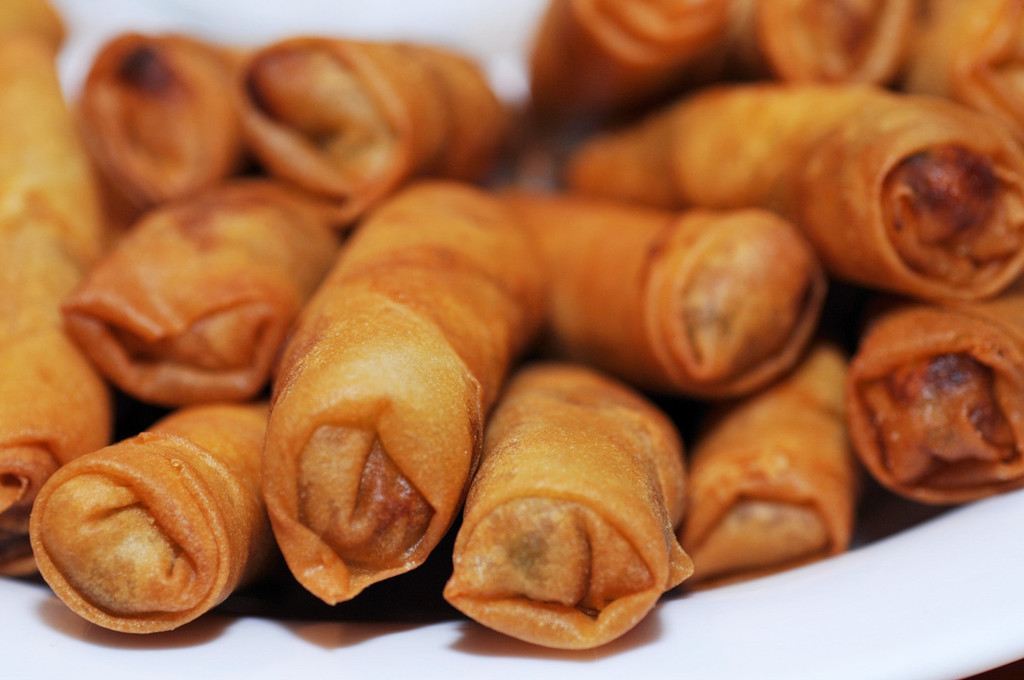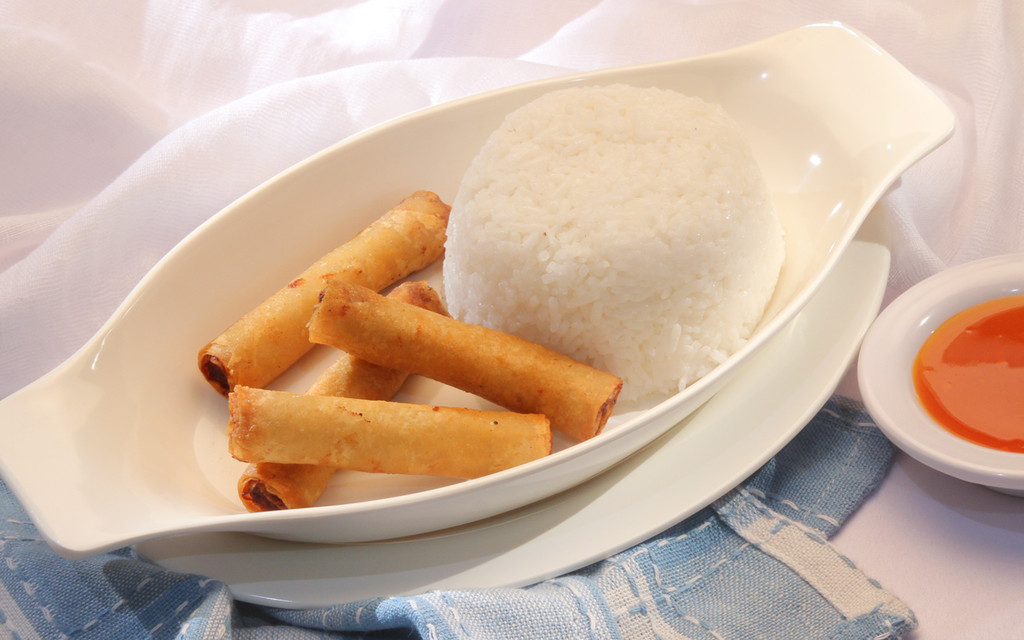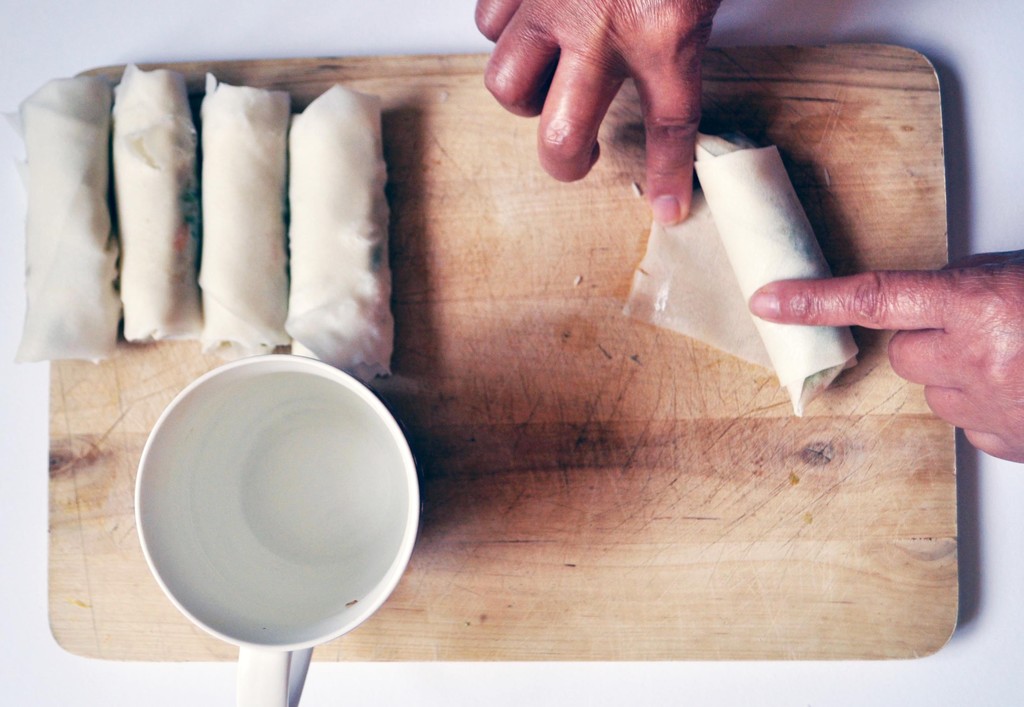Lumpia (Filipino Spring Rolls)
Today I am talking about a typical Filipino dish, very similar to the Chinese spring rolls: lumpia. Apparently they can be mistaken, but they are very different both for the filling and for the wrapper that envelops them, giving the typical shape of a roll.
Along with other dishes, the lumpia can easily be considered as thesymbol of Filipino cuisine. It is impossible not to find them at parties or restaurants, because they are almost the star of each "Handaan" (Philippine Party), as well as other dishes: pancit, Palabok, Menudo, Leche flan...
I used to think that the term lumpia was only known in those countries where there is a large Filipino community, as in the United States, but only a few days ago I discovered that also in the Netherlands this term is used properly to indicate, in general, the Spring rolls! Little by little Filipino cuisine is invading the world!
To my friends, Italians and not only, like them a lot and I'm sure that once you try them, you'll love them too! The ingredients are genuine and fresh. Perhaps, at the beginning you will find in making a lumpia difficult, or being able to wrap the filling with pastry, but once you manage the tecnique, it will become a piece of cake for as simple as it is! I also recommend you to cook some rice to accompany these delicious rolls.
I'm leaving here you the quantity of ingredients needed to satisfy the palate of 10 people, about 100 lumpia. Of course you can halve them.
Ingredients
-
1kg of ground meat either pork or beef or mixed
-
4/6 big carrots, minced
-
1 onion and half, minced
-
6/8 cloves of garlic, minced
-
parsley to your liking
-
1 or 2 eggs
-
cheese (sliced) to your liking
-
salt and pepper
-
1 red pepper minced (not compulsory)
-
1 or 2 packs of lumpia wrapper
Step by step
-
In a large bowl put all the ingredients except the egg and the cheese. Amalgamate everything until you have a homogeneous mixture.
-
Cover with transparent film and let it sit in the fridge for a couple of minutes. It would be better a couple of hours or even a whole night, so you have all the flavors mixed up between them.
-
After the rest time, brown the mixture in a non-stick pan. If needed, just use a drizzle of oil. Cook for a couple of minutes until it has lost the pink colour of the raw meat. You don't have to cook completely but just enough to make the compound less raw. Remove from the heat and let it cool down to be maneuverable.
-
Add the beaten egg and the cheese. Mix well.
-
If you have big roll wrapping, divide it in 4 parts.
-
In a bowl beat the remaining egg (pptional). You can use water instead of the egg.
-
In each wrapping, put about 1 teaspoon of the filling, in the closest corner to you, about a 1cm before the edge, stretching to the sides, leaving a space of 1cm about, per side.
-
Start rolling it inward, being careful to let the air out, tightening it a little. Before you get to the end, close the sides, bringing them inward. Keep rolling and seal the end by brushing it with beaten egg or water.
-
Put each lumpia on a plate, taking care to put the sealing part at the bottom, towards the plate, so as to make sure that the ends are properly sealed and closed.
-
Heat a pan with plenty of oil. The oil must be very hot but not too much, otherwise you risk to burn the lumpia way before they are cooked.
-
Lay the part of the sealing toward the pan so that you are sure it will not open.
-
Cook the lumpia to moderate flame until it is browned. Be careful, because the paste of the roll can burn easily.
-
Lay the Lumpia on the baking paper so that the excess oil is absorbed.
-
Eat them while they're still hot, with a nice plate of rice! Enjoy your meal!
Tips and curiosity
The Lumpia are considered by Filipinos"Ulam", of which I have already spoken in my post about "chicken adobo", but they can perfectly be good starters or second courses or side dishes.
They are simple and yummy! I haven't found anyone who doesn't like them yet! Being small, it is very easy to eat more than 5 without even noticing it. Seriously!
The wrapping for the rolls is sold in a single compact so you have to separate each pastry from the other. Bring patience and be very careful because it is very delicate, it can break and pierce with ease. Every time you separate the wrap, put a damp cloth on it to prevent it from drying out and becoming hard. Even when you start stuffing, make sure that the damp cloth is always on top of the remaining dough, ready to be stuffed.
§On the web I have seen that sometimes phyllo paste being used, I honestly have never tried it so I can not say anything about it, but I tell you that the typical dough used for Lumpia is very different and much lighter, so if you want a nice result, use that or the one used for the Chinese spring rolls.
In the Philippines, there are many variants of Lumpia, one of which drives me crazy, called "Lumpiang Sariwa", or fresh Lumpia. It is stuffed with vegetables, wrapped in fresh dough and it is not fried! It's accompanied with the most exquisite sauce that you could try!
Photo gallery
Content available in other languages
- Italiano: Lumpia (involtini di primavera "filippini")
- Español: Lumpia (rollitos de primavera filipinos)
- Français: Lumpia (rouleaux de printemps philippins)
Want to have your own Erasmus blog?
If you are experiencing living abroad, you're an avid traveller or want to promote the city where you live... create your own blog and share your adventures!
I want to create my Erasmus blog! →
 Source
Source  Source
Source  Source
Source  Source
Source  Source
Source







Comments (0 comments)